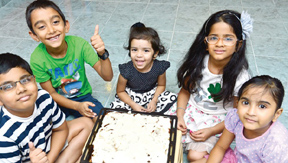 WASHINGTON: Body posture is critical in the early stages of acquiring new knowledge, affecting memory and learning, a new study suggests. The studBody posture may affect memory, learning
WASHINGTON: Body posture is critical in the early stages of acquiring new knowledge, affecting memory and learning, a new study suggests. The studBody posture may affect memory, learning
WASHINGTON: Body posture is critical in the early stages of acquiring new knowledge, affecting memory and learning, a new study suggests.
The study offers a new approach to studying the way “objects of cognition,” such as words or memories of physical objects, are tied to the position of the body.
“This study shows that the body plays a role in early object name learning, and how toddlers use the body’s position in space to connect ideas,” Linda Smith, professor in Indiana University Bloomington College of Arts and Sciences’ Department of Psychological and Brain Sciences, said.
Using both robots and infants, researchers examined the role bodily position played in the brain’s ability to “map” names to objects.
They found that consistency of the body’s posture and spatial relationship to an object as an object’s name was shown and spoken aloud were critical to successfully connecting the name to the object.
“A number of studies suggest that memory is tightly tied to the location of an object. None, however, have shown that bodily position plays a role or that, if you shift your body, you could forget,” Smith said.
To reach these conclusions, the study’s authors conducted a series of experiments, first with robots, which were programmed to map the name of an object to the object through shared association with a posture, then with children age 12 to 18 months.
In one experiment, a robot was first shown an object situated to its left, then a different object to the right; then the process was repeated several times to create an association between the objects and the robot’s two postures.
Then with no objects in place, the robot’s view was directed to the location of the object on the left and given a command that elicited the same posture from the earlier viewing of the object.
Then the two objects were presented in the same locations without naming, after which the two objects were presented in different locations as their names were repeated.
This caused the robot to turn and reach towards the object now associated with the name.
The robot consistently indicated a connection between the object and its name during 20 repeats of the experiment.
But in subsequent tests where the target and another object were placed in both locations – so as to not be associated with a specific posture – the robot failed to recognize the target object.
When replicated with infants, there were only slight differences in the results: The infant data, like that of the robot, implicated the role of posture in connecting names to objects.
The research was published in the journal PLOS ONE. -PTI






